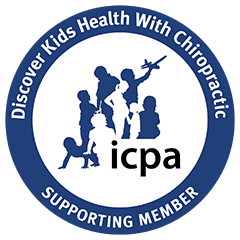Seasonal Affective Disorder or SAD is a type of depression related to the changes in the seasons. Typically SAD will begin and end about the same time each year. It is estimated that about 20% of Americans are affected each year.
SAD is also known as the “Winter Blues” and occurs when the days begin to darken and sunlight is at a minimum. Health and mood are directly linked to sunlight exposure. So when we are exposed to bright light, serotonin levels (the hormone associated with happy moods) raise.
Melatonin levels will also change with daylight. Melatonin tells our body when it’s time to go to bed. As the amount of light and dark changes, it will affect biological clock and circadian rhythm.
SAD vs. Depression
The typical symptoms of SAD may mimic major depression. These symptoms may include decreased energy, increased appetite, increased need/desire for sleep, loss of interest in pleasurable or fulfilling activities, craving carbohydrates, irritability, and weight gain.
The main symptoms of depression include: loss of interest in life, difficulty making decisions, feeling unhappy or a profound sadness, low self-esteem, avoiding social interaction, feeling numb, despairing, or empty, and/or suicidal thoughts.
The primary difference between SAD and depression may be the severity of the symptoms. The clear difference is SAD will go into remission during the spring and summer months whereas depression will not.
SAD Risk Factors
According to the MAYO Clinic risk factors for SAD may include:
- Being Female: Although primarily diagnosed in women, men with SAD will usually have more severe symptoms.
- Age: Younger individuals are more likely to be diagnosed with SAD.
- Family History: SAD is likely to be present among blood relatives.
- Having Clinical Depression or Bipolar Disorder: Symptoms of both of these diseases may worsen during the winter months.
- Living Far from the Equator: SAD appears to be more common in individuals who live in the far north or far south away from the equator.
Treating SAD
Conventional treatment usually recommends exposure to bright light daily using a full-spectrum light therapy light. Typically, SAD patients should spend about 30 minutes a day in front of this light. Light therapy has been found to be effective in 80% of cases. The light affects brain chemistry that plays a role in regulating mood. It can be effective within days but sometimes may take 2 weeks or longer. It is recommended to try full-spectrum light therapy over selective serotonin reuptake inhibitors (SSRIs) such as Prozac or Zoloft. Scientists have found that it can be equally as effective without the dangerous side effects common with drug therapy.
Vitamin D and SAD
Vitamin D is produced in our body when we are in the sun. As you can imagine, during winter months we do not see as much sun and can become deficient in vitamin D. Research has shown a link between low vitamin D levels in the blood and symptoms of depression.
During a review of studies about vitamin D and depression, researchers analyzed all the published research on the link up to 2011. More than 5,000 articles were researched but only 13 of those articles explored this area effectively. More than 31,000 people were included in these 13 studies. The results showed an undoubted relationship between low levels of vitamin D in the blood and depression although it is unclear whether vitamin D levels were the cause or the effect.
Winter Wellness
Sara Hayden, a mental health therapist at TFP Therapeutic Services in Ontario, Canada recommends the following strategies to address SAD:
- Vitamin D3 supplementation
- Full-spectrum light therapy
- As much time outdoors as possible whenever the sun is out
Some other recommendations that may help improve overall health and subsequently mood during the winter months may include:
- Exercise–try and move 30 minutes a day.
- Going to bed on time–turn off your electronics 1 hour before bed to help get a good night’s sleep.
- Avoid processed foods–refined sugars and other processed foods can decrease your overall health and therefore mood
- Optimize gut health–improve your gut bacteria by adding in fermented foods or a high quality probiotic
- Increase high quality, animal-based omega-3 fats
The Chiropractic Factor
Dr. Elyssa’s goal is to improve the health of you and your family. Health is defined as a state of complete physical, mental and social well-being (not just the absence of disease!) To learn more about the benefits of chiropractic care and the benefits of making it part of your family’s wellness lifestyle click below to schedule a complimentary consultation with Dr. Elyssa today.
To learn more about Seasonal Affective Disorder read the full newsletter here.



